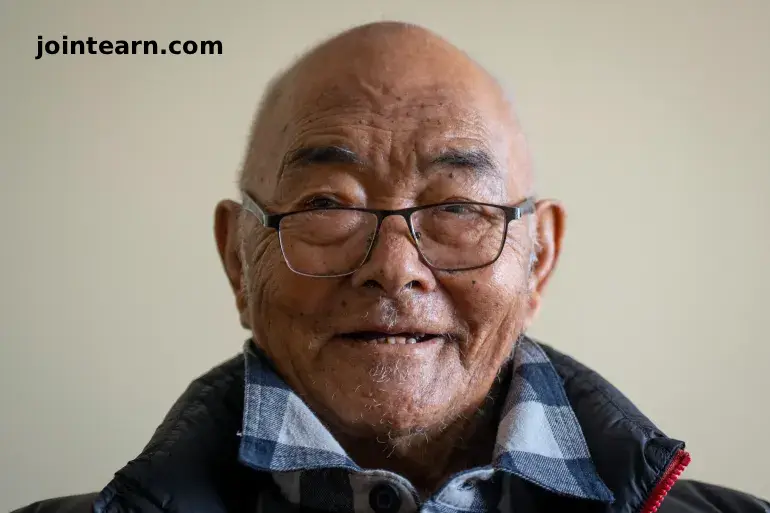
Kanchha Sherpa, the last surviving member of the historic 1953 Mount Everest expedition that enabled Tenzing Norgay and Edmund Hillary to reach the summit, has passed away at the age of 92 in Kathmandu, Nepal. His death marks the end of an era in mountaineering history.
Legendary Mountaineer and Himalayan Guide
The Nepal Mountaineering Association described Kanchha Sherpa as a “historic and legendary figure,” noting that his contributions to mountaineering were invaluable. He died at his home in Kapan, Kathmandu, on Thursday, leaving behind a legacy that will be remembered worldwide.
“We are deeply saddened by the passing of Mr Kanchha Sherpa, the last surviving member of the first successful summit of Mount Everest in 1953. His absence leaves an irreplaceable loss … He will be dearly missed,” said Fur Gelje Sherpa, president of the association.
Role in the First Everest Expedition
Born in 1933 in Namche, a village at the foothills of Everest, Kanchha Sherpa grew up in a farming family typical of the Sherpa community. He later worked as a porter and mountaineering guide after being persuaded to train for climbing while visiting Darjeeling, India.
Kanchha Sherpa was one of 35 team members supporting the historic climb in May 1953. He helped Tenzing Norgay and Edmund Hillary reach the summit, serving as one of three Sherpas who reached the final camp alongside them. Although he never personally summited Everest—his wife considered it too risky—his work was critical to the success of the expedition.
“He never actually climbed to the summit of Everest himself,” Kanchha said in a 2024 interview, “and he forbade his children from becoming mountaineers.”
Later Life and Views on Mountaineering Tourism
After the 1953 expedition, Kanchha continued working in the Himalayas for two decades. He retired from mountaineering after losing many friends to climbing accidents. In his later years, Kanchha expressed concern over Everest becoming an overcrowded adventure tourism destination, warning about pollution, litter, and environmental degradation on the sacred mountain.
“It would be better for the mountain to reduce the number of climbers,” he said.
“Qomolangma is the biggest god for the Sherpas. But people smoke and eat meat and throw them on the mountain.”
Everest now sees more than 600 climbers each season, according to National Geographic, with overcrowding creating dangerous conditions and contamination that threatens local communities’ water sources.
Legacy and Survivors
Kanchha Sherpa is survived by his wife, four sons, two daughters, and grandchildren. His passing marks the end of the living link to one of the most iconic achievements in mountaineering history—the first successful ascent of Mount Everest on May 29, 1953.
His life remains a testament to the courage, skill, and dedication of the Sherpa community, who continue to play an essential role in high-altitude mountaineering.
Leave a Reply